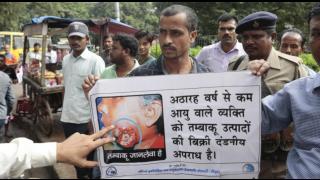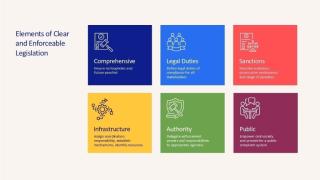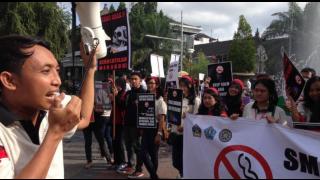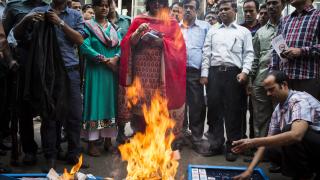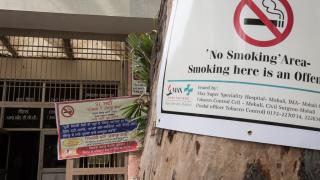
GOAL: Coordination mechanism for enforcing the law is in place with strategic plans for all aspects of implementation and appropriate resources allocated to activities.
Tobacco control laws frequently require multiple government agencies to implement and enforce them. Effective coordination and communication between the agencies is key.
A strong strategic approach with thorough planning is needed, involving all relevant stakeholders.
Recommendations
Key elements to successful coordination and planning for implementation:
Use the navigation below to explore the page and find recommendations and top tips on coordination and planning.
Establish or strengthen the coordination mechanism
Tobacco control laws frequently require multiple government agencies to implement and enforce them. Therefore, coordination and communication between the agencies is key.
It is very important to set up a coordination mechanism at a high administrative level with strong coordination authority. Tobacco control work is typically the responsibility of the health department, but because it is at the same level as other administrative departments it can be challenging for it to instruct and coordinate. Under a multi-sectoral law enforcement mechanism, it is preferable to set it up at a higher level than the involved administrative departments. Oversight by a senior political figure can also strengthen the coordination mechanism.
Civil society can play a critical role in establishing coordination, particularly in smoke-free and TAPS implementation. If direct participation by civil society is not possible on an interagency coordination group, a separate civil society advisory group can be created to provide appropriate input.
featured resources
Smoke-free Air: Law Enforcement Lessons from the Field
This toolkit from the Global Smoke-free Partnership draws on the experience of jurisdictions that have successfully implemented strong smoke-free laws, and captures some of the important lessons common to these efforts.
Examples of Tobacco Control Strategic Plans
Examples of tobacco control strategic plans to provide guidance for creating comprehensive implementation and enforcement agendas, yearly plans and public health goal setting.
Program Sustainability Framework and Assessment Tools
Set of tools for program sustainability including a self assessment guide and a program framework guide.

Bangladesh’s Smoking and Tobacco Products Usage Act, enacted in 2005, banned smoking in public places and public transportation. Tobacco control advocates and government stakeholders worked together to create an enforcement mechanism based on the following: 1) identification of violations; 2) submission of violations to enforcement officers and sensitization of violator; 3) issuance of warning to violator; 4) enforcement of law by authorized officers; and 5) final reporting of violation and outcome.
Civil society organizations are essential to this process, especially when it comes to building awareness of business owners and community members. They also play a role in reporting violations to proper enforcement officials and sharing final outcomes with the media.
Situational analysis
It is important to have a broad picture of the situation and to analyze the status of the local implementation and enforcement in the jurisdiction.
Strategy and Planning
A strong strategic approach with thorough planning is needed, involving all relevant stakeholders. Some key elements to consider include:
Coordination: Ensuring a clear enforcement mechanism is established with all key stakeholders represented and inter-agency arrangements or agreements in place.
Priorities: Careful planning on which inspections take priority, based on available evidence and aligning with existing government health priorities.
Budget and resources: Establishing what budget and resources are available for conducting all necessary implementation and enforcement actions.
Tools: Establishing protocols, procedures and tools for all enforcement activities.
Timing: Planning for when the law will come into effect – or be reactivated – and ensuring there is enough time that stakeholders are sensitized and informed of their rights and responsibilities.
Sustainability
It is important for tobacco control enforcement activities to be sustainable over the long term.
Whilst some laws in some settings may become self-enforcing, this is not always the case. Financing for these activities can be funded through health levies, tobacco taxes, licensing fees, tobacco-related fines and health-related budget lines from Ministries.
Efficiency and sustainability are a key aspect to any tobacco control enforcement activities, especially in low-resource settings. Where possible, building inspections into the existing regular work of inspectors can be an efficient approach. For example, food safety officers are well placed to inspect restaurants under smoke-free laws.
Implementation Areas
Legislation
Effective tobacco control laws are passed by a legislative body to protect the public from the harms of tobacco use.
Regulations
Issued by an executive authority or government regulatory agency, a regulation (or rule, order, ordinance or guideline) explains how to implement a specific law and its related penalties and sanctions.
Countering Industry Interference
Extreme vigilance is the only way to counter the tobacco industry’s attempts to interfere with and muddy public health policies.
Stakeholder mobilization
Tobacco control law compliance depends on diverse stakeholders with both the capacity and commitment to effectively implement and enforce them.
Public communications
Public education campaigns enumerating the benefits of tobacco control legislation help build consensus and facilitate smooth implementation.
Enforcement Actions
Multiple agency coordination, stakeholder engagement with stakeholders, and strategy and planning activities are all critical components of enforcement.
Monitoring and Evaluation
A plan to assess progress and evaluate impact must precede implementation.
Compliance
Tobacco control law compliance increases the percentage of the population that is protected from tobacco harms.

